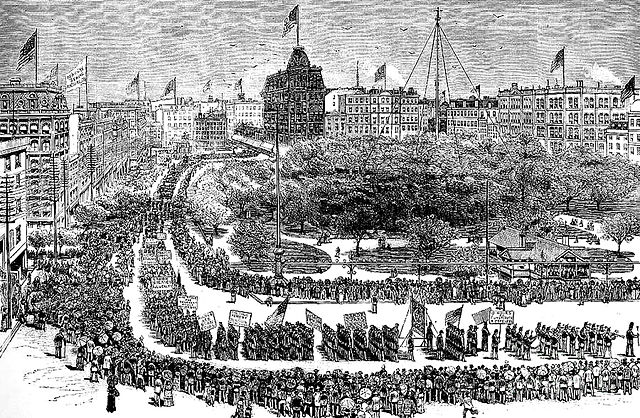Slavery, Civil Rights, and the Labor Movement
Share
Explore Our Galleries
Breaking News!
Today's news and culture by Black and other reporters in the Black and mainstream media.
Ways to Support ABHM?
By Sam Judy, Dallas Weekly

The year 2023 has been a consequential one for the labor movement in the US. At the end of last year, President Biden signed a bill to block the then-impending national rail strike that was partially motivated by stricter time regulations leading to worse safety standards. The following February, the train derailment in East Palestine, Ohio dominated the news cycle and was one of many derailments that occurred across the country following Congress’ measure against the strike.
Accordingly, the year has held a thick tension between workers and the ruling class. As striking workers advocate for greater safety measures, better hours, and fairer pay, they provide a greater sense of well-being for the nation through direct and indirect links.
[…]
While solidarity with white workers brought Black workers onto the union stage, such as during the Great Strike of 1877, by 1894 the movement was fractured among poor whites and the new generation of freed Black folk. Due to exclusion from unions, such as Eugene V. Debs’ American Railway Union, Black workers were hired as strikebreakers by companies such as the Pullman Company. America’s first recognized Black-led labor union came in the form of the Brotherhood of Sleeping Car Porters (BSCP) in 1925.
[…]
Despite previously acting as another obstacle to the advancement of Black people in the United States, the organized labor movement established itself as an ally to the civil rights movement. With over 400,000 Black union members by the early 1940s, the civil rights movement had successfully integrated with the labor movement. During World War II, Black Americans were segregated within the armed forces and were largely excluded from the economic fortune enjoyed by white workers in defense and military production. Accordingly, Randolph organized for 10,000 Black Americans to march on Washington, D.C. in what was considered one of the most militant and important displays of Black solidarity in history at the time.
[…]
The United States is currently in the midst of the resurgence of a modern labor movement. At the cross-section between labor sectors including transportation, defense manufacturing, arts & entertainment, and the medical field, consequential strike efforts have emerged in the midst of a devastating bout of inflation in the aftermath of a pandemic lockdown. Labor Day commemorates not only our workers, but the revolutionary spirit which defends their humanity in a capitalist system.
Several Black women have contributed to the labor movement, which addresses the racism of American labor.









Comments Are Welcome
Note: We moderate submissions in order to create a space for meaningful dialogue, a space where museum visitors – adults and youth –– can exchange informed, thoughtful, and relevant comments that add value to our exhibits.
Racial slurs, personal attacks, obscenity, profanity, and SHOUTING do not meet the above standard. Such comments are posted in the exhibit Hateful Speech. Commercial promotions, impersonations, and incoherent comments likewise fail to meet our goals, so will not be posted. Submissions longer than 120 words will be shortened.
See our full Comments Policy here.